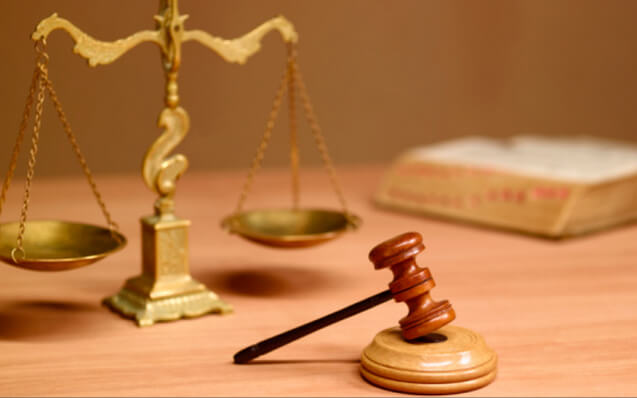This article is written by Millia Dasgupta, from O.P. Jindal Global University (JGU). The article covers the rule of law and its applicability in India.
Table of Contents
Introduction
In simple words, rule of law is the supremacy of law over the government. While the definition and various scholars who propounded the principle may make it appear to be a rigid rule, the application of rule of law varies depending on the circumstances and environment of the country in which it exists. The relationship between rule of law and government is complex, to say the least. It is impossible to give a definite stance on whether the rule of law is good or is bad. Considering India’s deep roots in colonialism and its multi-cultural political environment, the structure of the rule of law has changed throughout the years. In this article, the author tries to lay out the bigger picture with regards to rule of law.
What is Rule of law
The principle of rule of law states that people who hold a certain authority should exercise their power within the framework of laws and norms, rather than left to exercise their power according to their own preferences. The rule of Law is based on characteristics such as legal certainty and predictability. Those who believe in the rule of law believe that such a setup provides freedom for those under the rules of law as they know the norms that regulate their life and thus can act accordingly so that they do not clash with the law. Rule of law is violated when those administering the law violate the law in some aspect or when they administer their power at their own discretion. If violation of the rule of law becomes a habit, then not only will people become disappointed but they will fail to develop any expectation as their trust in the rule of law will be lacking.
In Lon Fuller’s ‘The Morality of Law’, the conception of the rule of law was outlined. According to Fuller, the rule of law does not require anything substantive, for example, it does not require that we have any specific liberty. He believes that whatever the state does, it should be done in a predictable and organized manner and whatever the state plans to do should also be informed to the people beforehand and the state should stick to the norms they have informed the people of, being careful not to divert even if it is politically advantageous to them. While many may see such conditions as procedural, Jeremy Waldron in his paper states that he sees these as more formal and structural as they state the formal qualities the state or government should have when prescribing such norms.
Albert Venn Dicey’s perception of the rule of law was more procedural on the other hand. According to him a procedural understanding of the rule of law necessitates not only that officials follow the rules as written, but also that they must carry out these rules with utmost care with regards to principles such as ‘natural justice’ and ‘procedural due process. Thus, if someone was to be accused of violating the law, they should have a chance to explain themselves under proper laid down procedure such as requesting a hearing in front of a court. The rule of law is violated when these procedural safeguards are undermined. Rule of law has been associated with ideas such as separation of power and the independence of the judiciary.
Joseph Raz further gave his theory of the rule of law in his book ‘The Authority of Law: Essays On Law and Morality. According to him, there are eight principles of law.
- Laws should be clear.
- Laws should be relatively stable.
- The making of these laws should be guided by clear and stable principles.
- The independence of the judiciary must be ensured.
- One should follow the principles of natural justice.
- Courts should have review power over principles that are implemented.
- The courts should be easily accessible.
- The authorities should not abuse the law.
Colonial history
India’s legal system is primarily made up of laws and legal ideas acquired from the British Raj. Most of these laws were framed in response to the flux of changes that were taking place in India and it was an attempt by the colonial rulers to understand India’s extremely different rule of law. To understand how the rule of law was applied in India and how it functioned in our jurisprudence, it is important to first see our history and understand its role.
The law was seen as a tool by the British to control Indians. They saw our way of law and governance as despotic and wished to change it. The British Raj’s concept of the rule of law was used more as a moral tool to tame our oriental ways. Alexander Dow with regards to the ‘success’ of the British Raj in India stated “the deplorable condition of a people subjected to arbitrary sway; and of the instability of empire itself, when it is founded neither on law nor upon the opinions and attachments of mankind”. They thus prided themselves in replacing the personal system of law already established in India with the colonial rule of law which was impersonal and efficient. While they believed the system which valued procedure and efficiency was better for Indians, it alienated Indians from the law as the law had become too foreign to them. The laws were used merely as a rule to carry out the wishes of the British Raj. The British had misunderstood a lot of our personal laws and scriptures when trying to accommodate them in the colonial system of law. The independence of the courts from the administration (the British raj) was also an illusion. At local levels, there was very little desperation between district officials as both collectors and magistrates and the higher courts hardly questioned the decision of the lower courts.
When looking back at how central the rule of law was in establishing the British Raj, it is ironic that the man who led India to Independence was a lawyer himself. Mahatma Gandhi had very strong opinions on British Raj. He was well aware that British law, courts, and lawyers were complicit in keeping the British Raj afloat. “My firm opinion,” Gandhi wrote in Hind Swaraj, is that “lawyers have enslaved India”. But Gandhi capitalized on the ‘Rule of Law’ that the British had made. The British by trying to distinguish themselves from the pre-colonial Indian way of governance had made themselves into a foreign power. It was easy to replace the British Rule of Law with the Indian Rule of Law that was defined by self-control, self-discipline, and non-violence. Swaraj or self-rule, which would be accomplished through satyagraha was a way to cut off Indians from the British Rule and replace it with self-rule.
Rule of Law in India
With the influence of the international conception of what public law should look like, in modern times the rule of law is what sovereign powers and state conduct cannot do. There are certain accepted principles that are the norm. For example, governments can not commit genocide or practice ethnic cleansing. However, the rule of law does not put any obligation on states to follow these principles. This is especially true for developing countries that are required to pass laws to benefit foreign investors and players at the disadvantage of their citizens. While governments have an obligation to their citizens, these foreign entitled have no democratic accountability to their country, thus resulting in a perverse rule of law. But despite these anxieties, the rule of law does find a way to uphold accountability. Keeping this in mind we move forward to discuss the rule of law in the Indian scenario.
While our laws, government machinery, and institutions may have a colonial past. However, conceptions of justice, rights, and development have less of a colonial heritage as compared to government machinery and institutions. According to Upendra Baxi, the rule of law in India can be defined through four aspects, i.e, governance, rights, and justice, and development.
Governance
The Constitution of India is a major source of the rule of law in India. In theory, the rule of law is in the hands of the parliament. For example, with regards to states, they have the powers to create new states, redraw the federal map, shorten or increase borders or even change the name of states. The law lays down procedures and gives them access to great amounts of power. But in reality, despite the law giving the parliament so much flexibility, they are not able to exercise it without repercussions. If they wish to make a new state, they will have to take many factors into consideration such as language and cultural identities, and they may face backlash in the form of state violence. However, one must not undermine the power of the parliament as they still do hold a heavy amount of influence. Take the distribution of powers for example. Upendra Baxi states “the Indian Parliament has generous residual authority that empowers it to legislate on matters not specified in the state and competitor lists; in addition, the laws that it can make often have a preponderant national authority.”
It is difficult to exploit the rule of law, especially through administrative laws that lay down so many checks and balances. There are many independent agencies such as NGOs that seek to protect the rights of minorities. India’s treasurer and auditor general, assisted by the Central Surveillance Commission help to combat corruption, and the Indian Electoral Commission helps with protecting electoral processes. While despotic rule might be a difficult beast to tame, with the rise of social media, investigative journalism, and judicial activism, it is becoming more difficult for governments to do whatever they want without answering someone.
Rights
Rule of Law is usually seen as something that is constricted by rights. But contrary to popular belief it can also be used as a tool to lay down procedures for state progressive action. Examples are Article 17 which prohibits untouchability and Articles 14-15 which enable the state to fight against cruel forms of abuse. Thus, these rights which constitute a part of Indian rule of law are not only seen as a check and balance against oppressive government actions but are also seen as a means through which the state can protect. Judicial Activism also aids in keeping the rule of law in check where principles of the constitution are used to keep other laws in check (Article 13). Thus, we have a paradox where rights enshrined under the structure of rule of law expands it as well as limit it.
Justice/Development
How has the rule of law assisted in justice or development? Principles of justice and development are written in the Constitution. But have laws enacted by the administration helped with this development? Rule of Law calls for governance through principles and norms established through due process and calls for no interference from the courts. If we look at the Indian scenario, we can see that while the government had tried to establish hegemony through the implementation of various administrative laws, they were defeated in the face of the power of the courts and judicial review.
The Supreme Court has unparalleled jurisdiction. Laws established by courts (through decisions) are binding on all lower courts and by implications, on all citizens and state actors. State authorities must also assist the Supreme Court in enacting the laws set by them. With the aid of guiding principles such as protection of rights, the courts have kept the executive in check. They have erected fences about delegation of power. They stated that the government’s power to make laws should not usurp the legislative function of public policy.
Even the administrative laws that are allowed to pass were rigorously policed. Judges also have a steel grip over laws passed by the legislature. Laws that violate principles such as fundamental rights and federative principles are considered null and void. They also have the impressive power to subject constitutional amendments to judicial scrutiny. However, a main criticism of the judiciary is that despite their power, they fail to force authorities to act according to the decisions. While this criticism is mainly valid, one should also keep in mind the limitation of capacity and opportunity when forming expectations.
Case laws
There are numerous case laws set out by the judiciary which have shaped how rule of law operates in India. In the case of Kesavananda Bharati v. State of Kerala (1973), the court held that the rule of law is the basic structure of the constitution. The bench overruled the decision given in Golak Nath (1967), and stated that while the parliament has wide amending powers, these powers do not extend to the basic features of the constitution, including the limitations on amendment enshrined under Article 368 which are imposed by the rule of law.
In the case of Indira Nehru Gandhi v. Raj Narayan (1975), the court held that the rule of law embodied under Article 14 is a basic feature of the constitution and can not be amended. The case gives impact to the philosophy of rule of law and states that the law of the land is supreme and can not be amended due to the will of one person.
In the case of Maneka Gandhi v. Union of India (1978), the Hon’ble Supreme court established the rule of law, stating that no person can be deprived of his life and personal liberty except procedure established by law under Article 21 of the Constitution.
In the case of Union of India v. Raghubir Singh (1989), the Hon’ble Supreme Court with regards to the independence of the judiciary stated that any provision that takes away the right to judicial review is seen to go against the fiber of the rule of law.
In the case of S.P. Sampath Kumar v. Union of India (1987), the courts reiterated that judicial review is a part of the basic structure of the constitution.
Criticism of the Rule of law
Regardless of the Indian scenario and the various accommodations built into Indian rule of law, it would be wrong to admit that many have not suffered under the rule of law. Many have suffered under acts committed under the government that were considered perfectly legal such as in the case of emergency.
It was Joseph Raz who stated that “the rule of law is a knife, a tool to enact rule and order”. But at times it can be a tool that suppresses one’s individual rights. This can lead citizens to become vulnerable to tyrannical governments. A substantive approach to rule of law on the flip side seems to offset the inadequacies of Raz’s rule of law by protecting fundamental rights that originate from rule of law. For example, Apartheid operated under Raz’s perception of rule of law which could have been rectified if there was a substantial aspect to rule of law. The laws that facilitated Apartheid were made under unfair conditions and institutionalized horrible crimes.
A substantive approach would have provided a space to engage with criticism and hopefully reform broken law. A substantive approach to rule of law is derived from the natural theory of law. According to this theory, all people are ‘created equal and are given certain inalienable rights.’ Thus, any law that violates these fundamental human rights is not seen as law under a substantive approach. By considering this approach, we can thus adhere to a more flexible rule of law that considers fundamental rights.
Conclusion
As we can see in India, the rule of law was never used as a tool to save us from arbitrary power, rather it was used to enforce the power of the British Raj. With the passing years, despite growing anxiety with regards to struct rules, rule of law with the help of the judiciary has helped establish a mechanism that does a suitable job of regulating the complex plane of the Indian polity.
References
- https://www.scielo.br/scielo.php?pid=S1806-64452007000100002&script=sci_arttext
- https://www.lawctopus.com/academike/rule-of-law-in-india-2/#:~:text=In%20the%20case%20of%20Maneka,Article%2021%20of%20the%20Constitution.&text=That%20there%20must%20be%20a,The%20law%20must%20provide%20procedure
LawSikho has created a telegram group for exchanging legal knowledge, referrals, and various opportunities. You can click on this link and join:
 Serato DJ Crack 2025Serato DJ PRO Crack
Serato DJ Crack 2025Serato DJ PRO Crack











 Allow notifications
Allow notifications



